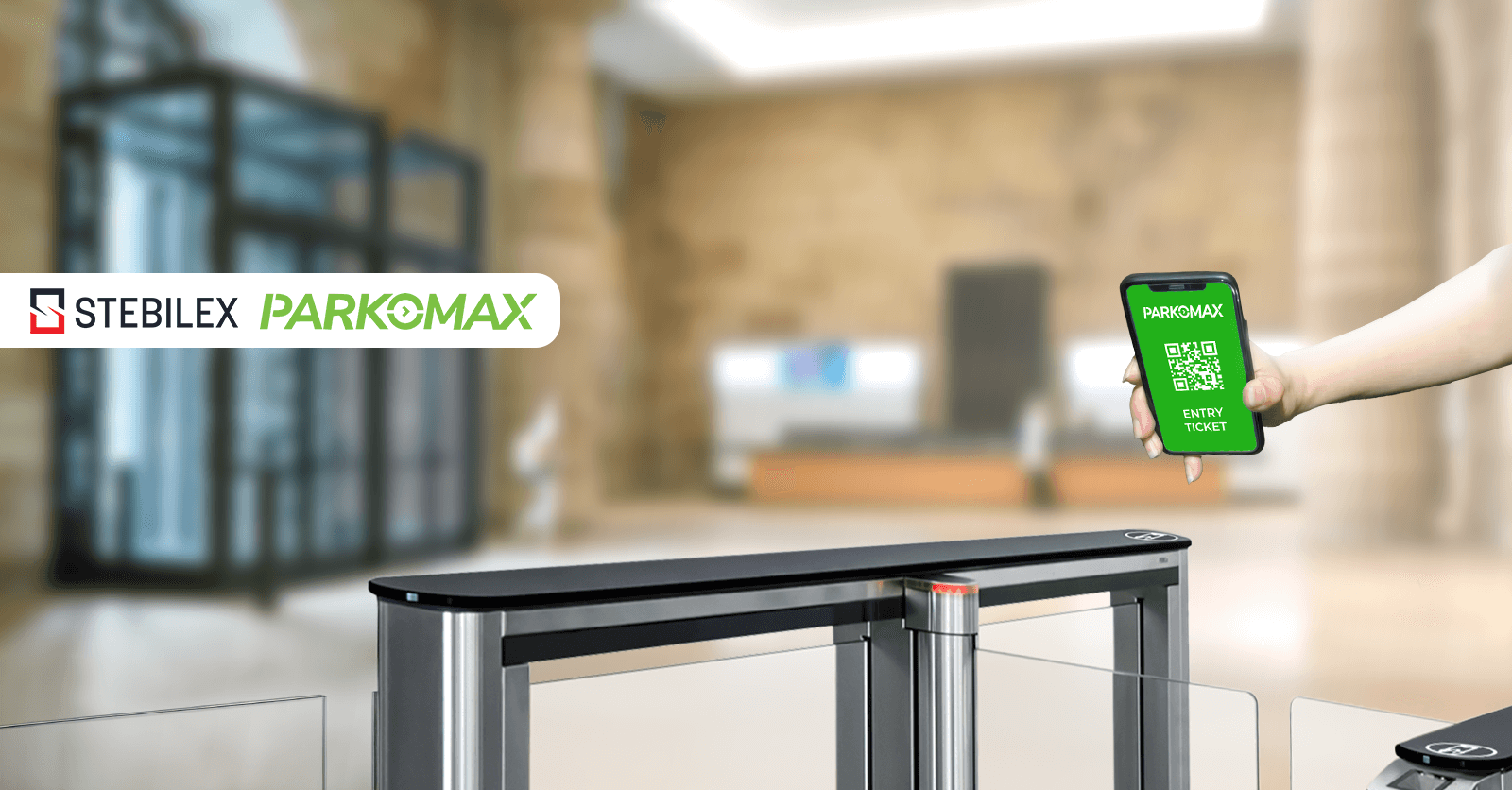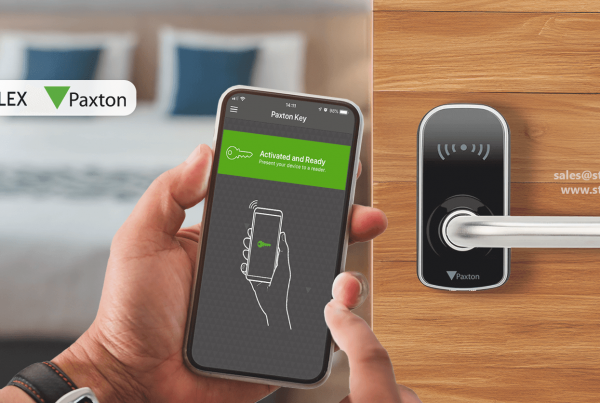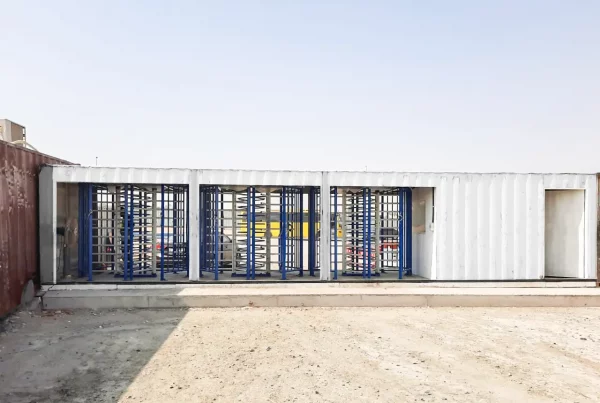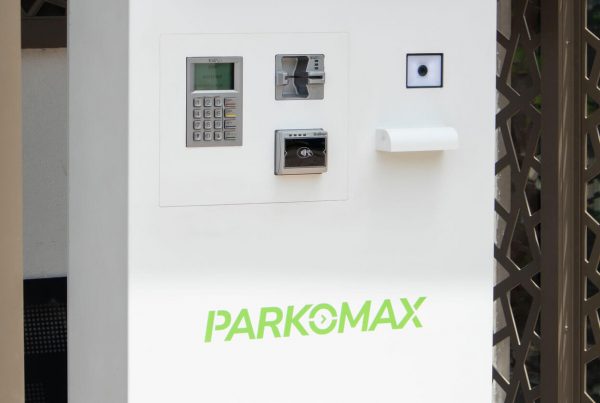A museum is a gateway to art, history, and culture. However, it would require time and energy to control the flow of crowds. Many museums worldwide have now deployed technological solutions to enhance visitor experiences and make administrative processes uncomplicated as physical ticketing services can be based on time-consuming queues and security threats. Making the admission process easier and safer enhances the happiness of visitors, which increases the prospects of the museum as well as facilitates the running of the museum.
Stebilex, one of the market leaders in practical solutions for access control and entry automation, has made a giant leap in this regard. Stebilex and Parkomax jointly developed an innovative paid access system of entry into the museums based on QR codes for VEM (Visitor Entry Management). To illustrate the benefits, challenges, opportunities, and outcomes of this technology-based approach, this case study analysis explores how a QR-based system was implemented to transform VEM systems in a popular museum.
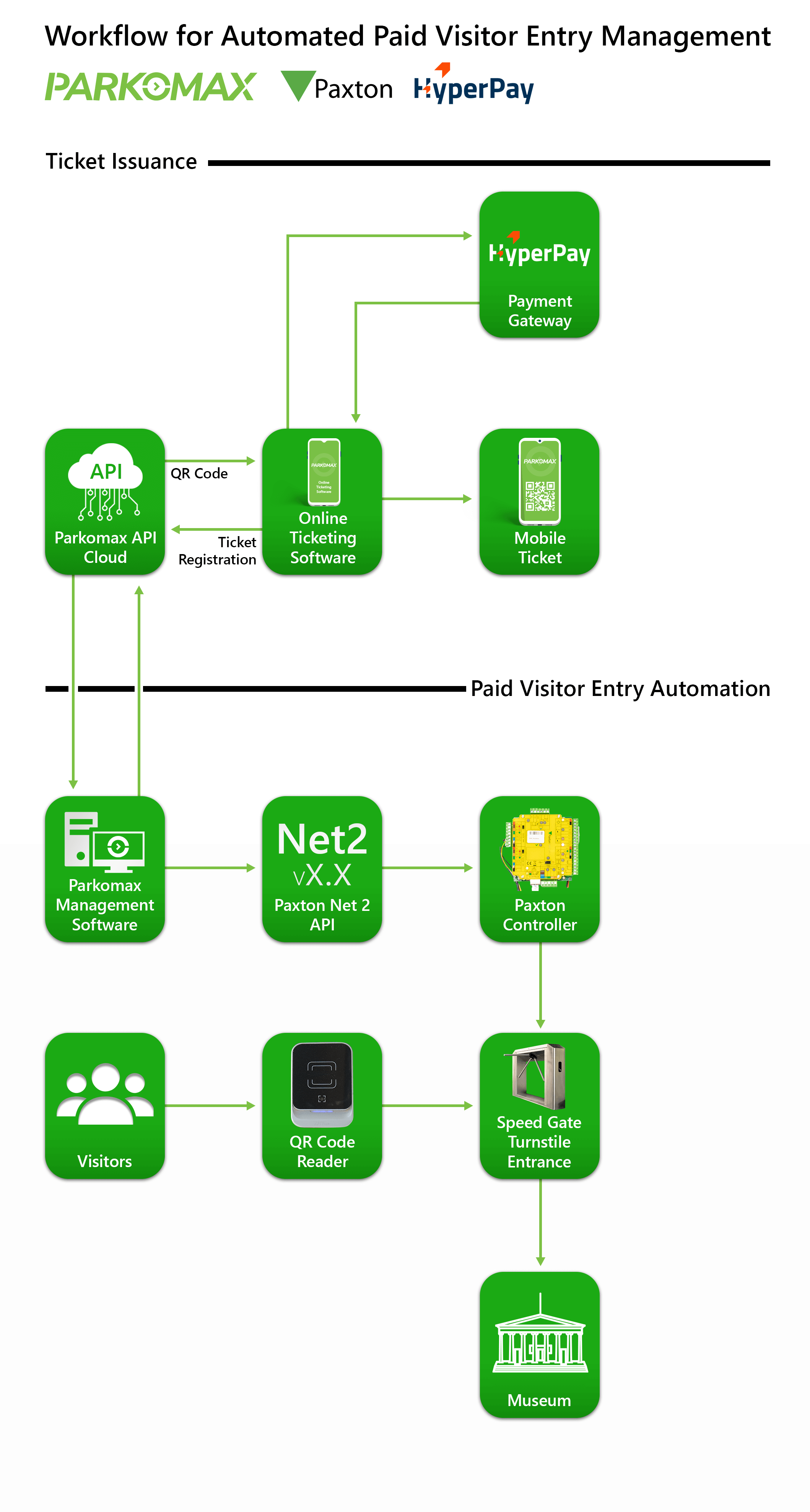
What is Visitor Entry Management?
Visitor Entry Management is also known as VEM and can be defined as the practices applied with the aim of regulating visitors’ access and monitoring their coming and going to a private or public area. It records visitation, ensures only those with permit rights are allowed to enter the facility, and enhances overall security and productivity. VEM systems can range from basic manual check-in processes to fully automatic check-in methods that interact with other security and management systems.
For an efficient visitor entry management system, many options of integration can be considered. It can also adopt modern concepts such as biometrics, Quick Response(QR) codes, and security cameras to ensure only those permitted can access the property while maintaining functionality and security. Guest entrance management systems can be significantly improved through the addition of security measures such as CCTV, Face Recognition, Real-time monitoring, etc. These integrations will serve as a strategic solution that will offer a boost to the satisfaction of the visitors and enhance their security.
What is the Need for Visitor Entry Management for a Museum?
As centres of culture and education, museums draw a sizable number of visitors, including travellers, scholars, and students. There are various reasons why effective guest admission control is important:
- Security: Keeping visitors and employees safe while safeguarding priceless exhibits is made easier by limiting access to just those who are permitted.
- Efficiency: Improving the overall tourist experience by streamlining the admission procedure lowers wait times and lines.
- Revenue Management: Accurate tracking and management of ticket income is ensured by the implementation of a paid access system.
- Data Collection: Compiling information on visitor numbers and habits can help with operational efficiency and future planning.
- Compliance: For reasons of health, safety, and law, it is imperative to ensure adherence to visiting limitations and other requirements.
Benefits of Museum Visitor Entry Management: Streamlining Operations and Enhancing Visitor Experience
There are several advantages for museums that install a strong Visitor Entry Management (VEM) system. A few noteworthy advantages are as follows:
- Reduced Wait Times and Queues: By having guests scan their tickets to get entrance, a QR code-based system drastically reduces entry times. This improves the overall experience of visitors by lowering the annoyance caused by lengthy lines and wait periods.
- Improved Security Measures: Each ticket has a unique QR code that can be instantly confirmed, lowering the possibility of fake tickets. This makes sure that only authorised guests are allowed inside, giving visitors and exhibits a safe and secure atmosphere.
- Decreased Manpower Needs: Automated entrance systems eliminate the need for human ticket inspections, freeing up workers to work on other crucial activities for the museum.
- Flexibility in Ticketing: The system offers a number of ticketing choices, such as admission to special events, multiple-entry tickets, and single-day passes. This adaptability increases convenience and enjoyment by meeting the requirements and preferences of various visitors.
- Real-Time Data Analytics: By using data analytics, it is possible to gain important insights regarding visitor trends, busy periods, and demographic data. Better resource management and enhanced visitor services can result from using this data to guide exhibit development, hiring choices, and marketing initiatives.
- Better Revenue Tracking: Accurate tracking of ticket sales and visitor counts is made possible by automated ticketing and entry systems, which guarantee effective and open revenue management. This enhances financial planning and lessens the possibility of income loss.
Challenges: Addressing Traditional Ticketing Issues
Managing visitor admission is a challenging task for museums. Conventional systems frequently have shortcomings that result in inefficiency and unhappy visitors. Important difficulties consist of:
- Extended Wait Times and Lines: Conventional paper ticketing methods can result in lengthy lines, particularly during busy visiting hours. This annoys tourists and puts pressure on museum employees to effectively handle the crowd.
- Possibility of Forged Tickets: Paper tickets provide a serious security issue as they can be counterfeited. Unauthorised admissions can result in lost sales and congestion, which lowers the quality of the tourist experience.
- Inefficiencies in Manual Verification: Verifying tickets by hand at entrance points takes time and is prone to human mistakes. This may result in irregularities and delays in the admissions procedure, which would make visitors unhappy.
- Limited Data Insights: Real-time data insights are not a feature of conventional ticketing systems. Without information on visitor behaviour and trends, museums find it difficult to streamline their operations and enhance the experience for visitors.
- Managing Special Events: It might be difficult to manage special events or busy times with standard ticketing systems. The event’s overall success may be impacted by poor management and congestion caused by rigid ticketing alternatives.
Solution: Implementing a QR Code-Based System for Efficient Visitor Management
Redefining visitor admission management, Parkomax created an advanced API service specifically designed to produce QR codes for museum ticket transactions. The ability to precisely manage entry criteria, such as date specificity and entry frequency, is made possible by the dynamic customisation of these QR codes. Assuring compatibility with current infrastructure, the solution connects smoothly with Paxton Net2 Pro controllers and software. The way the system tackles difficulties with museum admittance is broken down as follows:
- Paid Access Through QR Codes: A paid access system based on QR codes was created in order to overcome these difficulties. This creative approach offers guests choice and improved security measures, all while guaranteeing prompt and secure admission.
- Adaptable QR Code Creation: To create QR codes with customisable entry dates and access kinds (single or many entries), an API service was created. This personalisation gives museums the adaptability they need to meet the varied demands of their visitors.
- Access Control System Integration: The Paxton Net2 Pro software and controllers, for example, are only a few examples of the hardware and software that the system easily interfaces with. Without needing significant hardware updates, this connection guarantees compatibility and seamless operation.
- Effective QR Code Recognition: Sophisticated ZKteco QR600 scanners that are linked to the Paxton Net2 controller and the speedgate are used to scan QR codes. Visitors may enter quickly and efficiently thanks to this configuration, which enables rapid verification of ticket validity.
- Real-Time Data Analytics: The technology generates real-time data analytics on visitor admission patterns and behaviours. With the use of this information, museums are better able to allocate resources efficiently, make data-driven choices, and enhance their general visitor management plans.
Implementation: Smooth and Efficient Set-Up for Museum Entry Management without any Operational Disruption
To minimise delays, museums must execute the installation of a new entry management system with great care and attention to detail. Our specialists made sure that the integration with the current infrastructure went smoothly by working closely with the IT staff of the museum. Here are the essential actions to take:
- Configuring the System: Installing Parkomax management software in the nearby data centre and distributing the Parkomax API on cloud platforms were the two steps in the implementation process. Setting up Speed Gates for efficient entry access and integrating them with the Paxton Access Controller and Paxton Net2 software was essential. Installing and synchronising ZKteco QR600 scanners with the Paxton Net2 controller and Parkomax management software was done with great care.
- API Integration: Creating an API service to create QR codes that are smoothly connected with the museum’s ticketing system was essential to the system’s operation. This made sure that the ticketing procedure was safe and effective.
- Extensive Examination: Our team tested everything under the sun in every operating situation to ensure dependability. This thorough testing stage confirmed the system’s resiliency and responsiveness in a range of scenarios.
- Comprehensive Staff Training: Staff at the museum received extensive training to ensure a seamless operating transfer. This gave them the abilities they needed to operate and oversee the new entry management system.
Results: Enhanced Efficiency and Visitor Satisfaction Through QR Code-Based Entry
The usage of QR code-based paid admission has produced significant results for the control of museum visitor entry:
- Effective Queue Management: The introduction of QR code scanning significantly shortened lines for access, providing guests with a quick and easy way to enter.
- Additional Security Measures: The system successfully reduced the hazards related to fake tickets by using distinct QR codes, guaranteeing strong security procedures.
- Increased Visitor Flexibility: Ticket validity was made more flexible for visitors, allowing for numerous entrances and particular dates to suit their preferences.
- Practical Visitor Insights: By giving museum administrators a comprehensive understanding of visitor habits and preferences, real-time data analytics enabled them to organise exhibits and allocate resources more wisely.
- Enhanced Visitor Satisfaction: By making the entrance procedure more efficient, visitors were happier overall, which improved their impression of the museum and encouraged them to come back.
Wrapping Up
To sum up, the Parkomax-powered QR code-based paid admission system has not only solved the problems posed by managing museum visitor admittance, but it has also raised the bar for both visitor happiness and operational effectiveness. Museums are now able to provide a safe and efficient entrance experience by utilising cutting-edge technology and connecting easily with current systems. Hyerpay’s payment gateway is an essential part of this ecosystem that makes sure transactions go smoothly, which improves the entire experience for visitors. Our dedication to providing innovative and superior solutions that satisfy our clients and their customers’ changing demands is demonstrated by this project.
About Parkomax
Parkomax, is a prominent name in the Middle East’s parking industry, with its headquarters located in Dubai. Their parking and entrance management systems are innovative and include Intelligent Parking Management Systems, Parking Guidance Systems, and Custom Business Kiosks. With the ever-changing demands of modern cities in mind, Parkomax is committed to providing flexible, easy-to-use solutions.
About Paxton
Paxton, a UK-based corporation, has a large global reach with deliveries to over 60 countries and regional offices in 12 countries. Praise for its installer-focused approach aside, Paxton safeguards more than twenty-five thousand properties annually. With thirty years of expertise, it sets the standard for creating dependable and easy-to-use door entry and access control systems for busy environments.
About ZKTeco
ZKTeco is a leading biometric technology company in the world, known for developing cutting-edge recognition methods. ZKTeco has a worldwide workforce of over 4100 people, of which over 1200 are devoted to research and development. The company provides innovative solutions for office automation, identity verification, and smart entry management. Supported by several patents in the fields of fingerprint, iris, face, vein, and palm print identification technologies, ZKTeco’s inventions encompass biometric verification algorithms, sensors, and software platforms, catering to public-service, corporate, and personal customers.
About HyperPay
HyperPay is a major fintech company in the Middle East and North Africa that is revolutionising online transactions. They have supported a variety of sectors since their establishment in 2014 by offering anything from payment gateways to complete online payment solutions. The firm is dedicated to providing safe, adaptable, and easy payment experiences to companies in order to promote long-term development and prosperity.
Upscale Beach Access Management with Stebilex Systems.
Let the skilled professionals at Stebilex Systems assist you today!
Frequently Asked Questions
How does the QR code-based Visitor Entry Management (VEM) system improve visitor experience and security in museums?
Wait times are cut down and security is improved using the QR code-based Visitor Entry Management (VEM) system, which simplifies the traffic flow in the museum. The admittance process is quick and easy for visitors, and ticket fraud is prevented by special QR codes. This technology enhances the entire experience for visitors and frees up museum employees to work on other important chores.
What specific features of the Parkomax and Paxton integration enhance the efficiency of the museum entry process?
Robust access control and automatic QR code scanning are combined in the Parkomax and Paxton integration to provide effective entrance management. This streamlines visitor experience and guarantees that only authorised persons are allowed admission while reducing human checks, shortening lines, and improving security.
How does the QR code-based system address the challenges of traditional ticketing methods?
Physical tickets are no longer required thanks to the QR code method, which also minimises the possibility of fake tickets. Visitors can enjoy enhanced security and convenience as well as a streamlined entry process with digital tickets that can be instantly verified.
Can you explain how the real-time data analytics provided by the QR code system can help museums optimise their operations?
Museums may get insights into visitor trends, peak hours, and demographics through real-time data analytics using the QR code system. This data further improves visitor experiences and operational efficiency by optimising workforce levels, display layouts, and resource allocation.
What are the benefits of integrating the VEM system with existing museum infrastructure, such as the Paxton Net2 Pro controllers and software?
Smooth operations are ensured without requiring significant improvements by integrating the Visitor Entry Management (VEM) system with already-existing museum infrastructure, such as Paxton Net2 Pro controllers. Simplified access control, effective visitor management, and simple system and process adaption are made possible by this integration for the museum.
How does the API service developed by Parkomax facilitate seamless QR code generation and integration with the museum's ticketing system?
Parkomax’s API service facilitates the rapid creation of QR codes, guaranteeing seamless interaction with the museum’s ticketing system. This makes it easier for tickets to be issued and validated efficiently, which improves visitor admission by making it quicker and more secure.
What measures are taken to ensure the security of the QR code-based admission system against potential threats such as counterfeit tickets?
By creating distinct codes for every ticket and making them impossible to forge, the QR code-based method provides security. Ensuring a secure atmosphere for visitors and exhibitions is further prevented by integration with access control systems and real-time validation.
How does the QR code-based system provide flexibility in ticketing options for different types of visitors and events?
Multiple entrance tickets, single-day passes, and event-specific access are among the flexible ticketing possibilities provided by the QR code system. Its flexibility meets various visitor requirements and occasions, improving ease and guaranteeing a customised tourist experience.
What kind of training and support is provided to museum staff to ensure a smooth transition to the new VEM system?
The museum staff receives extensive training and assistance to guarantee a seamless transfer to the new VEM system. This includes in-person instruction, comprehensive user guides, and continuous technical assistance to resolve any problems and guarantee smooth functioning.
How does the integration of ZKteco QR600 scanners with the Paxton Net2 controller enhance the efficiency of visitor entry management?
By providing quick and precise QR code reading, ZKteco QR600 scanner integration with Paxton Net2 controllers improves entry efficiency. This provides rapid and secure admission, which lowers wait times for entry, guarantees smooth access management, and enhances the entire visitor experience.
What are the primary outcomes and benefits observed after implementing the QR code-based entry system in the museum?
Museums report shorter wait times, more security, and happier patrons since deploying the QR code-based system. Better operations and a more pleasurable visitor experience are made possible by the system’s effectiveness in managing huge crowds and real-time data insights.
How does HyperPay contribute to the overall functionality and efficiency of the QR code-based admission system?
Contributing to the QR code-based admission system is HyperPay, which provides a safe and effective payment channel. This connection guarantees seamless transactions, supports a range of payment options, and improves the entry process’s general effectiveness and user experience.
What are the scalability options for the QR code-based VEM system to accommodate future growth and increased visitor numbers?
Due to its great scalability, the QR code-based VEM system enables museums to develop and welcome more visitors in the future. The system can accommodate different visitor quantities and grow as needed without sacrificing efficiency because of its flexibility and adaptability.
Can the QR code-based VEM system be customised to meet the specific needs and requirements of different museums or cultural institutions?
The VEM system may be tailored to each museum’s unique requirements. The system is designed to meet the specific needs of each museum and improve visitor management. It has features including customised ticketing choices, interaction with current infrastructure, and adjustable entrance controls.
How does the system handle peak times and special events to ensure smooth and efficient visitor entry?
The system uses automated entry procedures and real-time data analytics to effectively handle peak periods and special events. This guarantees easy access for guests, lessens traffic, and preserves a first-rate experience even during peak times or major events.

I’m a psychology major turned content writer, using words as my canvas for self-expression. My passion lies in marketing, where I skillfully craft compelling content that captivates and converts, giving each word a purpose. Writing has uncovered my true voice, allowing me to create resonating and engaging narratives.

